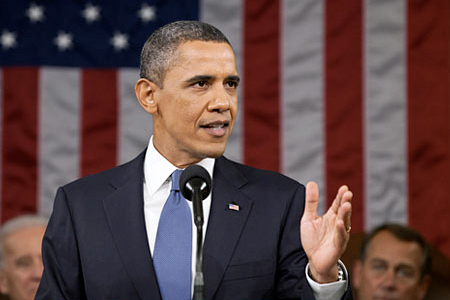If you’re like most dudes, you probably have yet to make any plans for Valentine’s Day. (Frankly, I weasel out of the deadline by subscribing to the philosophy that this is a holiday for receiving gifts, not giving them.) Chances are you’re planning to just stop by CVS on your way home from work on Thursday, buy a heart-shaped box of Russell Stover chocolates, and call it a day. But unless you were looking to support child labor, environmental destruction, and other generally despicable business practices, you might want to go a little farther out of your way this year when selecting your Valentine’s Day chocolate.
By now our cold, skeptic, liberal hearts know to question the ethics behind a McDonald’s Big Mac or a four-carat diamond ring. And it’s easy to question candy’s origins when we’re shoveling it by the truckful into our kids’ mouths on Halloween. But how many of us would eye a piece of Godiva chocolate with that same level of suspicion? Below is just the beginning of everything you never wanted to know about the origins of your fancy chocolate. And while you might never be able to look at a Hershey bar the same way again, hopefully you will laugh a little less the next time you see a $9 bar of chocolate on sale at Shake Shack.
The drugstore is selling you blood chocolate.
OK, that sounds dramatic, but a day in the African cacao trade isn’t too far from a Blood Diamond outtake (Leonardo DiCaprio not included). For the world’s biggest chocolate makers — Hershey, Nestle, and Mars account for more than 35 percent of global chocolate production — practices like child slave labor, rainforest demolition, and heavy reliance on GMOs are just a part of doing business. But lucky for them, the supply chains between the African farmers and the American manufacturers are so long and winding — links include plantation owners, chocolate dealers, African government officials, and cocoa suppliers — that companies can claim ignorance. A 2010 documentary called The Dark Side of Chocolate laid those supply chains bare and also exposed the major chocolate companies’ willful ignorance; the filmmaker’s repeated attempts to force the truth on them are met with refusal and eventually physical removal from company premises.
Even worse: For African children, chocolate poses a much bigger threat than just cavities. A 2011 Tulane University study found a “projected total of 819,921 children in Ivory Coast and 997,357 children in Ghana worked on cocoa-related activities” in 2007-2008. (I use the term “work” loosely: That implies payment, when most of these children are in fact slaves who are imprisoned on farms, beaten for trying to leave, and denied any wages.) NGOs, politicians, and even a Hershey shareholder have tried to force the industry to change, but so far, these efforts have been stymied by the powerful chocolate barons, who are surprisingly evil for folks who make candy for a living. An example: In 2001, after heavily publicized reports of child labor in the cocoa industry, U.S. Sen. Tom Harkin (D-Iowa) and Rep. Eliot Engel (D-N.Y.) tried to pass legislation to require chocolate companies to show that they were “child labor free” and label their products as such. But after intense industry pushback, the Harkin-Engel Protocol that passed made certification voluntary; the idea of labeling products was abandoned entirely. In the more than 10 years since it was signed, the new rules have done almost nothing to liberate child workers in the chocolate industry.
And by the way, these companies crush more than children’s dreams. They are also responsible for encouraging farmers to clear West African rainforests to make room for more cocoa plants, as well as mowing down the Indonesian and Malaysian rainforests for palm oil plantations. The multi-continent deforestation subsidized by Big Chocolate also releases tons of greenhouse gases and displaces indigenous peoples.
Just in case these weren’t reasons enough to steer clear of the big brands, you can also expect your drugstore chocolate to be filled with everyone’s favorite ingredient: GMOs. (Hershey and Mars are reported to have spent a combined $1 million-plus to defeat California’s Prop 37.) So all of the dicey politics and questionable science you taste in your cornflakes are in your Russell Stover’s chocolates, too.
The bottom line: Most chocolate is very, very bad — even if it’s expensive, comes in a fancy box, or calls itself “gourmet.”
Don’t depend on labels like “organic” and “Fair Trade” to single-handedly soothe a guilt-stricken sweet tooth.
OK, so you don’t want to support child slavery but you still want to buy some special Valentine’s Day chocolate. So you head to your local Whole Foods and scan the bar for text that says something like “Fair Trade” or “Organic.” Those are cool, right? Maybe. According to Clay Gordon, creator of chocoholics’ website The Chocolate Life and a recognized authority on everything from cacao taste to business practices, “sustainability has three pillars: environmental, economic, and social.” While the available labels can provide some indications about how a company scores on these metrics, no single one fully satisfies all three.
“Organic,” for example, refers to strict adherence to environmental and processing requirements. Peter Meehan, co-founder and CEO of Newman’s Own Organics, notes that his company’s chocolate (my personal favorite: Newman’s Own Organic Orange Dark Chocolate), certified by third-party agency Oregon Tilth, is made according to strict U.S. organic standards, using cacao beans grown without pesticides for at least three years and without GMOs. But because the term says nothing about, for example, economic or social sustainability, it can’t tell you much else.
To bolster their cred, companies like Newman’s Own Organics often pursue additional certifications, like the Rainforest Alliance label. That one, Meehan says, “is about quality of life,” protecting wildlife, the environment, workers, and the larger communities. “It reflects more ‘would you want to live in that village?’” he says. A gift of Newman’s Own Organics chocolate also supports the Newman’s Own Foundation, which to date has given more than $400 million to charity. “I don’t know how a gift can get any nicer than that,” Meehan adds.
“Fair Trade” is another common chocolate label, guaranteeing that a fair price was paid to local farmers for the cacao beans, fair labor practices are being observed, and local communities are being supported. But farmers have to pay thousands of dollars [PDF] for that certification, and Gordon points out that money that farmers could’ve otherwise invested in their employees, land, or communities is instead going first to farmer cooperatives and then to international certifiers and auditors*, adding more links in the chain between the bean and the customer.
While these labels can provide some level of comfort to conscious consumers, the companies using them usually don’t have direct relationships with their suppliers. It adds another link in the chain — and more room for potentially shady practices — between bean and bar.
Look for the shortest supply chain whenever possible.
Despite all the fancy labeling options, “it’s the companies that don’t feel the need to [fulfill the requirement] of the certification that are in fact doing the best work rather than abdicating responsibility to a third party,” Gordon says. These bars might cost significantly more than what you can get at Duane Reade (think $7 and up per bar), but that’s because you are paying a fair price that actually accounts for the labor, shipment, and processing of the beans, instead of one artificially subsidized by abusive practices.
Clay advises that instead of a Fair Trade label, consumers should look for words like “direct trade” and bars with single origins. According to Susie Wyshak, a food business consultant specializing in chocolate and confections, if the packaging says the chocolate is “bean-to-bar,” then “the company whose name appears on the chocolate bar has made that chocolate starting with the actual cacao bean.”
For San Francisco-based chocolatier Dandelion Chocolate, that means actually traveling to Venezuela, the Dominican Republic, and Madagascar to meet the farmers and negotiate the terms of their contract. “When we go directly to the farmers we tend to get the best beans, because we have personal relationships, and we also get a really good price,” co-founder Todd Masonis says. “And then because there are no middlemen, the farmer gets a really good price.” Each of their single-origin bars is made from beans that came from the same country, and because the only added ingredient is sugar, you can really taste the distinctions between them — in the same way you can taste the difference between vintages of wines. (My personal favorite: the fruity flavored Madagascar bar.) One of Wyshak’s picks: Wisconsin-based chocolatier Gail Ambrosius, who regularly travels to Costa Rica for her supply. Gordon’s top choice, Askinosie Chocolate, doesn’t just buy directly from farmers: They use an open-book accounting policy, giving the farmers full access to their financial records, and therefore the best possible position at their negotiating table. Recently named one of the “15 Guys Who Are Saving the World” by O: The Oprah Magazine, founder Shawn Askinosie led a group of American students to Tanzania to meet with his farmers, as well as build the local village a well, tank, and windmill.
So this Valentine’s Day, skip the lazy drugstore candy. If you can’t afford the $9 stuff, so what? I personally think most women would prefer something more personal and less cliché, anyway (a great mix CD still does it for me.) But if you really need to satisfy a known chocolate craving, spend the time — and money — finding a chocolate as special as the person you are buying it for. They’ll thank you for it.
*The original article incorrectly stated that certification money goes to Fair Trade’s expenses. Certification money is in fact distributed to other certification services.




